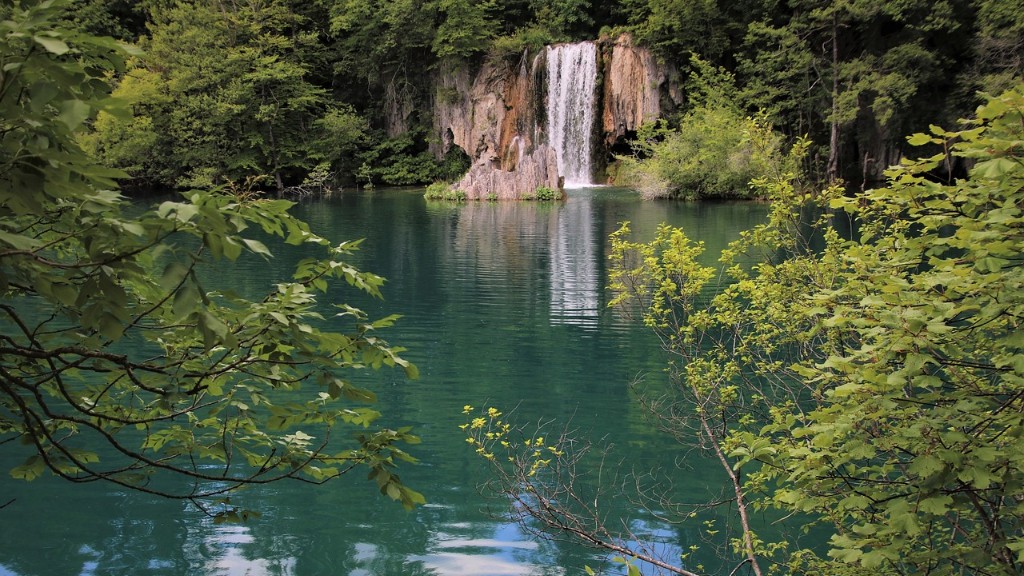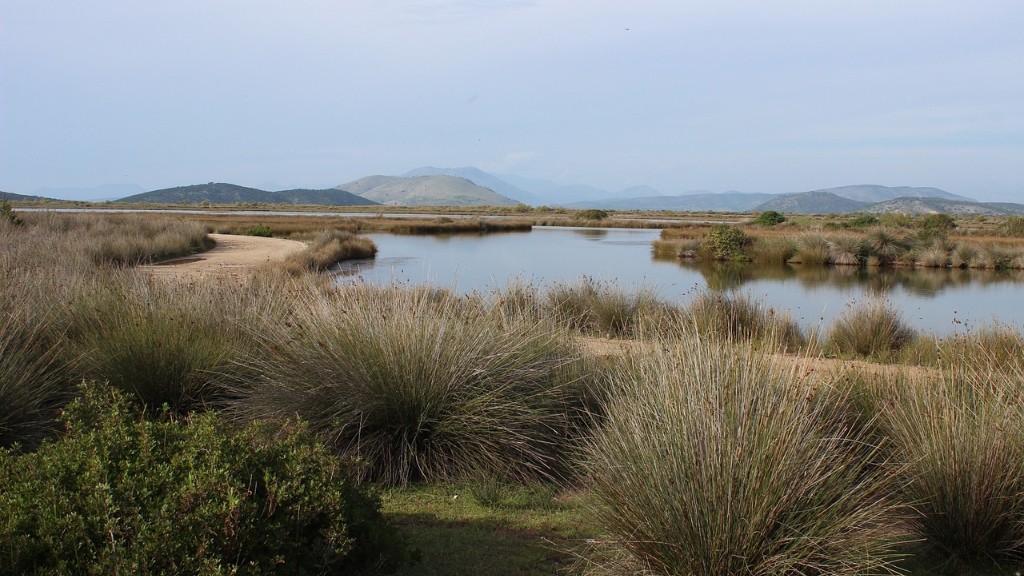The Mississippi River is one of the world’s most important and colorful waterways, home to countless species of plants, animals, and invertebrates. The river’s vast size supports a wide range of habitats; from wide, open sections of deep freshwater to marshy shallows, from slow, shallow floodplains to swift, rapids. Each one of these habitats provides a home to a breathtaking variety of species. Whether you’re talking about fish, amphibians, reptiles, birds, or mammals, these are the creatures that call the Mississippi River home.
The Mississippi River has supported a variety of fish species for centuries. Muskie, northern pike, walleye, carp, largemouth and smallmouth bass, trout, catfish, sturgeon, Drum, Buffalo, Gar, and many sunfish all frequent the waters of the Mississippi River. Native species are also well represented, with many species of endangered Catostomidae, as well as endangered fish such as the Channel Catfish and the Shortnose Sturgeon.
Amphibians and reptiles are also abundant, with species such as the Bull Frog, Cane Toad, Leopard Frog, and the Pig Frog. Turtles and reptiles such as the Northern Map Turtle, Red-eared Slider, Loggerhead musk turtle, and Mud and Moccasin Turtles also can be found. The alligator snapping turtle, one of the rarest of all reptiles, can occasionally be seen.
Birds frequent the river as well, providing hours of wildlife watching opportunities for anyone lucky enough to spend time along her banks. Common species include great egrets, bald eagles, ring-billed gulls, black-crowned night herons, American white pelicans, and double-crested cormorants, but numerous other species call the Mississippi River home.
The Mississippi River also supports a large population of aquatic mammals. The river is best known as the home of the iconic American river otter, but beaver and muskrats can also be found. Mink, otters, and muskrats are some of the few mammals who thrive in the swift rivers and tributaries of the Mississippi River.
With such a wide variety of life to explore, it’s easy to understand why ecological researchers and environmentalists have long sought to study and protect the Mississippi River. With its vast expanse of freshwater, rich and diverse wildlife, and unique ecosystem, the Mississippi River remains one of the most spectacular ecosystems in the world.
Invasive Species in the Mississippi River
The Mississippi River is also home to an array of invasive species. These invasive species can disrupt the delicate balance of the river’s ecosystems, having an impact on native species and habitats. Among these are the Asian carp, which have spread throughout the upper Mississippi River basin, competing with native fish species for food and resources. Other invasive species, such as zebra mussels, have also been introduced, further disrupting the delicate balance of the river’s ecosystems.
The introduction of these invasive species can have a long-term negative impact on the Mississippi River, but their presence also highlights the need for better stewardship of the river’s resources. By increasing awareness of the threats posed by invasive species, there is a greater chance that steps can be taken to reduce their spread and protect native species from further harm.
Part of this effort involves controlling the access that people have to the Mississippi River in order to reduce the possibility of introducing or transferring invasive species or other pollutants into the river. This can be done through increased enforcement of restrictions on use of the river, such as banning certain types of boat traffic and fishing practices.
It is also important to have a comprehensive understanding of the species that are living in the Mississippi River in order to plan and implement effective management strategies. Numerous research projects have been conducted to collect baseline data on the distribution and abundance of species living in the Mississippi River with the aim of monitoring and managing potential impacts of human activities and invasive species.
Pollution in the Mississippi River
For every species that lives in the Mississippi River, human pollution has an impact. From industrial waste to agricultural runoff, pollutants are entering the river in ever-increasing numbers. This pollution has an immediate and devastating effect on the wildlife that inhabit the river, from fish species to such sensitive species as the Bald Eagle, a species whose population is already in decline.
The impact of pollution on the Mississippi River is felt across multiple scales; from the microorganisms that are essential for a healthy ecosystem to the large-scale disruption of entire species. In addition, pollutants such as nitrates are having a major impact on the health of aquatic plants, which can dramatically reduce the amount of oxygen available in the water and affect the entire food chain.
Organizations such as the Mississippi River Basin Alliance are working to address this problem, advocating for more stringent regulations and urging businesses to take responsibility for their impacts. Ultimately, the only way to protect the species that depend on the Mississippi River is to reduce the amount of pollution flowing into it, and everyone has an important role to play.
Environmental Restoration Efforts
In recent years, much work has been done to restore and protect the Mississippi River. Numerous conservation and restoration projects have been implemented aimed at restoring the quality of the water and protecting both the species that inhabit the river and the habitats that support them.
The Army Corps of Engineers has been instrumental in this effort. Working in collaboration with other federal, state, and local agencies, the group has launched projects aimed at restoring habitats, reintroducing native species, promoting sustainable fishing practices, and reducing pollutants. Projects like these restore the natural balance of the river and improve the health of the ecosystem.
Additionally, the government is taking measures to reduce the amount of pollution entering the river. New environmental regulations are being introduced that place more stringent limits on pollutants discharged into the river, while new technologies are being developed to help reduce the amount of nutrients and pollutants entering the river through agricultural and urban runoff.
At the same time, technological advancements are being employed to monitor the health of the river and identify areas that require more attention. For example, satellite imaging and technology like unmanned aerial vehicles is being used to track changes in the Mississippi River over time and help direct restoration plans and focus resources.
Adaptation Strategies
Due to the ever-changing climate, it has become increasingly important for the species that inhabit the Mississippi River to be able to adapt to their changing environment. This involves finding ways for species to remain resilient in the face of rising temperatures and changing water levels.
To do this, researchers are looking for ways to support the species that inhabit the river and the habitats they depend on. For example, flooding of the river has become increasingly frequent in recent years due to changes in precipitation and snowmelt. To address this, projects have been launched to create floodplain restoration areas and help prevent flooding in the future.
Likewise, climate change has had a dramatic effect on the species that inhabit the Mississippi River. To address this, environmental groups are turning to artificial spawning grounds, creating wetlands to provide new habitats for species, and increasing efforts to protect and expand existing habitats.
Finally, researchers are looking for ways to utilize the existing genetic diversity of the species that inhabit the Mississippi River to help them cope with the changing environment. By taking advantage of natural selection and the ability of species to adapt to their changing environment, researchers hope to find ways to promote the survival of the species that inhabit the Mississippi River.
Conservation Efforts
Finally, while it is important to look at the challenges facing the Mississippi River and the species that inhabit it, it is equally important to remember the efforts that are being made to protect and conserve the ecosystem. Conservation efforts are taking place at a local, regional, and national level, with organizations such as the U.S. Fish and Wildlife Service actively seeking to protect the species that inhabit the Mississippi River.
In addition to the efforts of the U.S. Fish and Wildlife Service, private organizations are actively working to conserve the Mississippi River. Organizations such as the American Rivers are working to protect the species that live in the river and advocate for improved management of the river.
In addition, numerous state agencies are working to protect and preserve the Mississippi River and its inhabitants. For example, Minnesota has long been at the forefront of river conservation, having enacted sweeping regulations on water usage that benefit both the environment and its inhabitants.
Finally, local communities are seeking new ways to protect the Mississippi River. In many communities, efforts are being made to reduce runoff, create wetland and floodplain restoration areas, and restrict boat and fishing activities that could have an impact on the river.
Conclusion
The Mississippi River is a unique and spectacular ecosystem, home to an untold number of species. With its expansive size and extensive habitat diversity, the Mississippi River has something to offer everyone, from the hobbyist angler to the professional naturalist.
At the same time, the Mississippi River faces numerous challenges, from pollution and invasive species to climate change and habitat destruction. However, by increasing public awareness, enacting stringent regulations, and restoring and protecting habitats, there is no doubt that the Mississippi River and the creatures that inhabit it can continue to thrive for generations to come.





